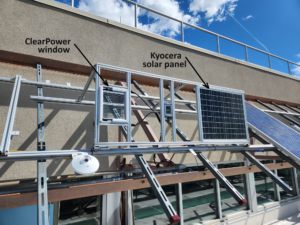(Idaho Capital Sun) – Idaho Department of Water Resources Director Mathew Weaver issued a curtailment order Thursday afternoon requiring 6,400 new groundwater rights holders who pump the Eastern Snake Plain Aquifer to shut off their water. theirs.
The order will affect groundwater users that the Idaho Department of Water Resources said are not in compliance with the state’s mitigation plans, according to a news release issued by the department Thursday.
“It is surprising to us that six groundwater districts would choose not to live up to the terms of any of their approved mitigation plans and subject their members to the reduction,” said Brian Patton, deputy director of the Department of Water Resources. in Idaho, in a written statement. .
Idaho Gov. Brad Little issued a statement in support of the order Thursday afternoon.
“Water reduction is never intended, but the director must follow the law and the Idaho Constitution in issuing this order,” Little wrote.
The order would affect about 500,000 acres of farmland in eastern Idaho and the Magic Valley if groundwater users do not comply. Groundwater users who have not participated in a groundwater mitigation district will have 15 days to join a plan or face cutbacks, the Idaho Department of Water Resources said.
In a statement released Thursday night, the Idaho Groundwater Appropriators criticized the order, which it described as the single largest reduction in water use in state history. Idaho’s groundwater appropriators said the order would dry up hundreds of thousands of acres of farmland and could cause a blow to the state’s economy amounting to hundreds of millions of dollars in economic losses.
“What remains is a completely absurd situation where hundreds of thousands of acres of farmland and the associated economic benefits are thrown away during a wet year to allow a small amount of additional water to flow from the aquifer into the Snake River. TJ Budge said in a written statement Thursday night.
Under Idaho law, Weaver will issue an updated order in July that takes into account the new water supply and crop needs, the department said.
Water rights in Idaho are governed by what is called the doctrine of prior appropriation, which means “first in time, first in right.” When there is not enough water to go around, the old water rights holders get their water first, and the new water rights holders are shut down – or restricted – if there is not enough water to go around.
“Idaho must preserve our water sovereignty and not become like other western states in the Colorado River Basin, like California, where the federal government stepped in to replace state control of its water,” Little said in his statement to writing. “We absolutely must conserve water for future generations, which is why the Legislature and I championed half a billion dollars in historic investments in recent years to modernize water infrastructure across the country.”
“My administration has been engaged on this issue for years, most recently through the formation of a Groundwater Management Plan Advisory Council,” Little added. “Consumers must determine their own destiny, and the creation of the council will continue to help them find solutions outside of government.” Idahoans always have and will continue to solve our problems, and we remain committed to working with all Idaho water users to ensure we have a sustainable water supply for this generation and generations to come.”
“If we continue the status quo with water use in the Eastern Snake Plain, we are setting our children and grandchildren up for failure,” Little said.
How do water rights work in Idaho?
Generally in Idaho, surface water users have high rights, while groundwater users have little rights.
For example, the Twin Falls Canal Co. has senior water rights dating back to 1900. The abatement order Weaver issued Thursday affects groundwater users who have minor water rights dating back to 1954.
On April 18, Weaver issued a water methodology order for the 2024 irrigation season that determined a 74,100-acre water shortage at Twin Falls Canal Co. Weaver gave new water rights holders until May 2 to send notices to the Idaho Department of Water. Water Resources that they are in compliance with their approved mitigation plans, the Idaho Department of Water Resources previously announced in a May 10 news release.
Thursday’s new abatement order will apply to groundwater users that the Idaho Department of Water Resources has determined are not operating under an approved mitigation plan. These groups include the Bingham Groundwater District, the Carey Valley Groundwater District, the North Snakes Groundwater District, the Magic Valley Groundwater District, the Bonneville-Jefferson Groundwater District, and the Jefferson-Clark Groundwater District.
Several other groundwater users are operating under an approved plan and will not be restricted, including the Coalition of Cities, Southwest Irrigation District, Henry’s Groundwater District, Madison Groundwater District and others.
The prospect of abatement for new water rights holders is not a new issue. Water issues have been litigated in Idaho courtrooms for decades, with a key settlement agreement reached in 2016. Most recently, the Idaho Department of Water Resources issued an order last year that contained a curtailment order that was put on hold pending a hearing with the department, the Idaho Capital Sun previously reported. After all, the department didn’t shut off the water last year after finding there was no shortage of water at that point last summer.
=htmlentities(get_the_title())?>%0D%0A%0D%0A=get_permalink()?>%0D%0A%0D%0A=htmlentities(‘For more stories like this, be sure to visit https:// www.eastidahonews.com/ for all the latest news, community events and more.’)?>&subject=Check%20%20this%20story%20from%20EastIdahoNews” class=”fa-stack jDialog”>
#State #official #issues #water #curtailment #order #east #Idaho #users #East #Idaho #News
Image Source : www.eastidahonews.com



